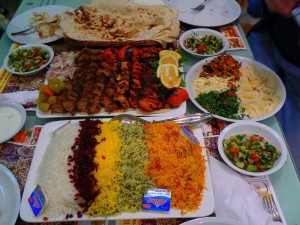For the last couple of classes we have been discussing Zeitoun by Dave Eggers, a non-fiction account of a Syrian-American man’s experience living Post-9/11 and during Hurricane Katrina in New Orleans. The story centers around Abdulrahman Zeitoun, his wife Kathy and their four children. It was written by critically acclaimed author Dave Eggers who worked side by side the Zeitoun’s in order to produce the most accurate account possible. In the section, Notes about the Book, it states, “This is a work of non-fiction, based primarily on the accounts of Abdulrahman and Kathy Zeitoun. Dates, times, locations and other facts have been confirmed by independent sources and the historical record. Conversations have been recounted as best as they can be remembered by the participants. Some names have been changed.” Additionally it states that “it was written with the full participation of the Zeitoun family, and reflects their view of the events”.
Already this statement is making a lot of claims. The issue with any work asserting that it is non-fiction is that it is claiming to be the real truth. But for any given story, there are multiple truths because there are many perspectives involved; we have talked about this idea a great deal in our ASTU class with regards to other texts. If a work is claiming to be the end-all-be-all, is there a way to dispute it? Can we debate the logistics, representations and attitudes portrayed in the book if they are claiming to be one’s true experiences? I believe to a certain extent yes. I do not believe there is such a thing as the absolute truth about an event because as the author of your retelling, you are subconsciously filtering what is most and least important. So while it is important to hear various voices, especially those are are often silenced, it is also important to consider the possible biases that a “truth” may present.
I am thinking about this mostly in context of the abuses that have come to light in the last few years. After the book was written, Kathy Zeitoun came forward about the domestic abuse she has been experiencing since the beginning of their marriage in 1994. How is it possible for Zeitoun, the man Kathy (through Eggers) describes as “an honest man, honest to the core, hardworking, reliable, faithful, devoted to family”, to do such a thing? But we know that Kathy has been abused; that is indisputable. So the question is then: was Eggers simply ignorant to the abuses when writing the book or was he covering them up? Throughout the entire book, the Zeitouns are described as the perfect family, from their perfect love story to their perfect children. They seem to have no flaws; although in one section, he made a point to address that they sometimes had a “spirited back-and-forth”. But this is the only place in the book in which this kind of behavior is outlined and I am not sure if those are necessarily the same words I would choose to describe domestic abuse.
It really begs the question of what other things were possibly tweaked in order to give a more positive spin of the truth. This is the main reason why it is difficult to claim that something is the truth; does spinning the truth also count? What implications does this have on the non-fiction genre as a whole? I think what we can take away from this instance is the fact that self-proclaimed truths should never be taken at face value; it is important to consider the person or persons behind it.



